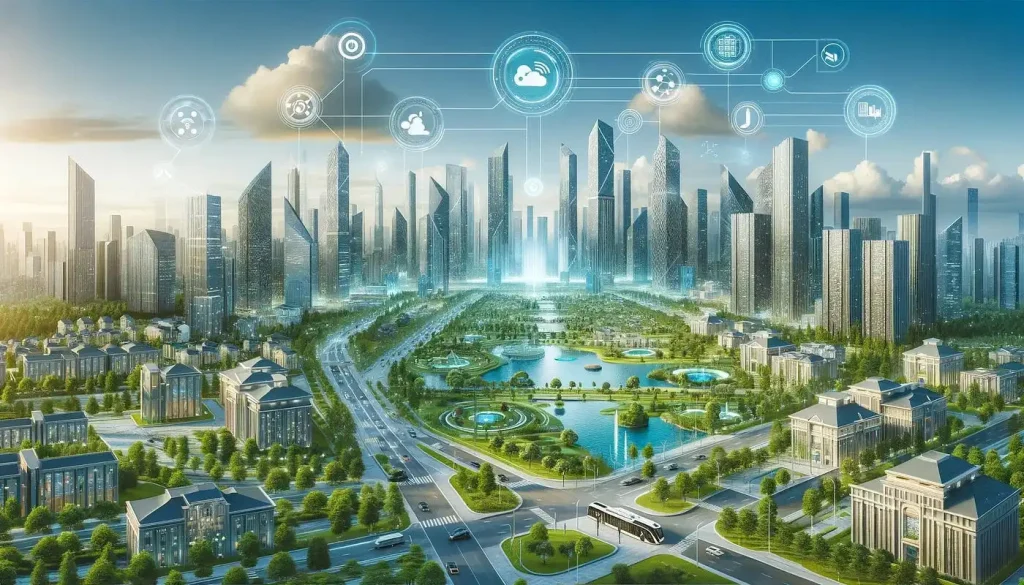
In the past, buildings were static—brick, mortar, and steel designed to shelter us but not much more. Today, the definition of a building has changed. Buildings have become dynamic, intelligent ecosystems that respond in real time to our needs, our comfort, and, critically, our responsibility to the environment.
This transformation is largely thanks to two powerful forces coming together: green building principles and IoT-based automation.
What Is a Green Building?
A green building is designed, constructed, and operated to:
- Use less energy and water
- Produce less waste and pollution
- Improve indoor air quality
- Enhance the well-being of occupants
- Lower operational costs over the long term
Green buildings aim to be efficient throughout their lifecycle—from planning and construction to daily operation and eventual deconstruction or repurposing.
But designing a green building is only the first step. To make a building truly sustainable day after day, you need intelligence and control. This is where IoT steps in.
What Is IoT-Based Automation?
The Internet of Things (IoT) refers to a network of connected devices—sensors, meters, controllers—that collect and exchange data. When paired with automation software, these devices don’t just measure—they act.
For example:
- A sensor detects that a meeting room is empty.
- It signals the lighting system to turn off the lights.
- Simultaneously, the HVAC system reduces cooling to save energy.
IoT-based automation enables buildings to operate with minimal human intervention, optimizing performance in real-time.
How IoT Transforms Green Buildings
Let’s explore how IoT automation turns ordinary buildings into living, breathing, sustainable environments.
Smart Energy Management
Energy consumption is the largest contributor to a building’s carbon footprint. Traditional systems operate on fixed schedules or manual control, often running when they’re not needed.
IoT changes this:
- Real-time Monitoring: Smart meters track energy use across lighting, HVAC, elevators, and plug loads.
- Automated Adjustments: Systems adapt dynamically—lights dim automatically when sunlight increases, and HVAC slows down in unoccupied zones.
- Peak Load Management: IoT can shift energy use to off-peak hours, reducing strain on the grid and lowering utility bills.
Result: Significant reductions in energy waste and operational costs.
Intelligent Lighting Systems
Lighting consumes up to 20–30% of building energy. IoT-based lighting systems use:
- Occupancy sensors to switch lights on only when someone is present.
- Daylight sensors to adjust artificial lighting based on natural light.
- Scheduling to match usage patterns.
In some buildings, intelligent lighting has cut energy consumption by over 50%.
Result: Lower electricity usage, extended lamp life, and improved occupant comfort.
Optimized HVAC Operations
Heating, ventilation, and air conditioning (HVAC) can account for nearly half of a building’s energy costs. IoT enables:
- Zoned climate control based on occupancy and preferences.
- Predictive maintenance that identifies faults before they escalate.
- Integration with weather forecasts to pre-cool or pre-heat spaces efficiently.
Result: Energy savings, better indoor air quality, and fewer equipment breakdowns.
Water Conservation
Water scarcity is a growing global challenge. IoT-enabled water management includes:
- Smart irrigation systems that water landscapes only when soil moisture is low.
- Leak detection sensors that alert facilities teams in real-time.
- Automated plumbing that reduces water flow during low-demand periods.
Result: Reduced water consumption and waste, lower utility expenses.
Healthy Indoor Air Quality
Green buildings also prioritize occupant wellness. IoT sensors monitor:
- CO2 levels
- Humidity
- VOCs (volatile organic compounds)
When air quality declines, the system automatically increases ventilation or alerts staff to take action.
Result: Healthier, more productive indoor environments.
Seamless Renewable Energy Integration
Many green buildings incorporate solar panels or wind turbines. IoT systems:
- Monitor energy generation and consumption.
- Prioritize the use of renewable power.
- Manage battery storage to balance loads.
Result: Reduced reliance on fossil fuels and lower carbon emissions.
Implementation: Best Practices
Deploying IoT-based automation in green buildings requires thoughtful planning:
- Assess Needs: Start with a clear sustainability goal—such as reducing energy use by 30% or achieving LEED certification.
- Choose the Right Platforms: Select scalable, interoperable IoT platforms that work across lighting, HVAC, and energy systems.
- Prioritize Data Security: Connected devices must be protected with robust cybersecurity measures.
- Train Your Teams: Educate facilities staff and occupants on how to use the systems effectively.
- Monitor and Adapt: Use dashboards and analytics to track performance, identify trends, and continuously improve operations.
The Impact: More Than Just Energy Savings
IoT-based green buildings deliver:
- Lower operational costs
- Healthier environments
- Enhanced asset value
- A powerful brand message of sustainability
They also contribute directly to climate action by reducing greenhouse gas emissions.
The Future is Smart and Sustainable
In the coming years, IoT-based automation will evolve even further. We can expect:
- Artificial intelligence to predict and optimize energy use automatically.
- Digital twins—virtual replicas of buildings—to simulate performance and test improvements.
- Greater integration with smart grids and renewable energy networks.
The buildings of tomorrow won’t just house people and businesses—they’ll be active partners in creating a sustainable world.
Whether it’s a commercial building, smart campus, or residential complex, Nakshatra Automation provides end-to-end solutions to create sustainable, smart environments tailored to the future.
Build smarter and greener with Nakshatra Automation. Contact us today to design your IoT-powered sustainable infrastructure.
